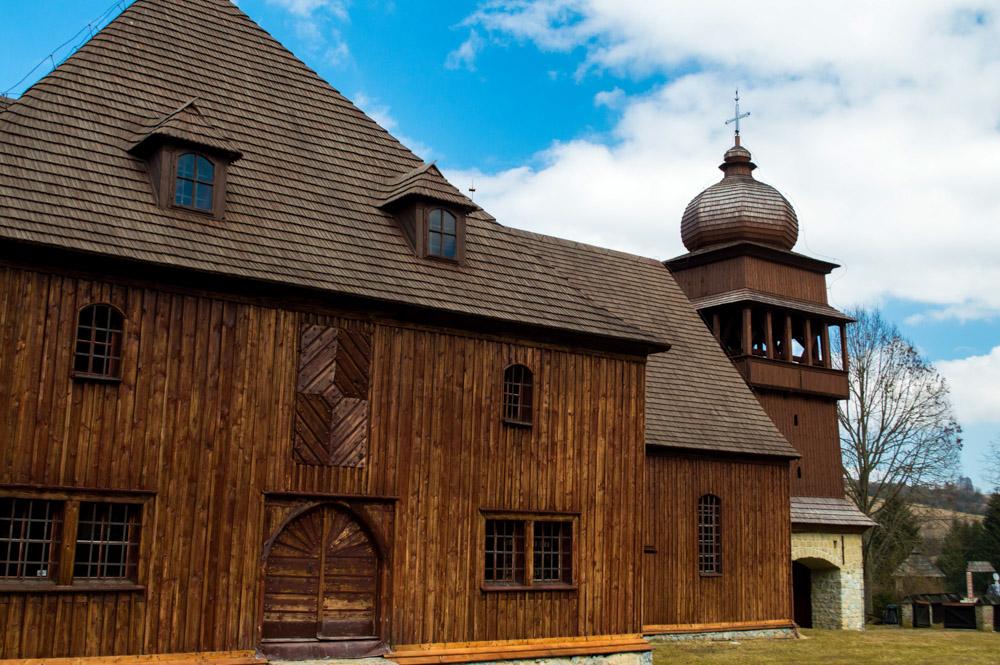The devoutly Catholic Austro-Hungarian Hapsburgs had long been intolerant towards other faiths and were especially resistant to Protestantism after the Reformation. However, a uprising in 1681 forced Emperor Leopold I to repeal the laws preventing the practice of these faiths in his domain and allow the construct of their churches. However, the Habsburgs still tried to suppress Protestants beneath a mound of restrictions. The churches they were allowed to build could only number a total of 38 throughout the empire, were not to have towers or bells, had to have an entrance on the opposite side of the pulpit and, most notably, could only be built from soft materials like wood. These conditions were strict, but Slovak Protestants made the best of what they were given and the church of Svätý Kríž is the pinnacle of their efforts.

The idea behind the restrictions placed on these (what we now know as) articulated churches was to make them seem like the worship places of uncultured, uneducated country folk. Who could compare a wooden shack to the grand spires of Catholic cities? It was not bad logic, but Emperor Leopold underestimated the ingenuity of these Slovak Protestants.
The first wooden church in the village, built in 1693, sufficed for almost a century, but became too crowded for the growing number of protestants in the region. So, in March of 1774, a carpenter named Jozef Lange was contracted to expand the church. He designed and erected the entire new structure in a mere eight months, without any nails, without any plan and without knowing how to read or write! It is a wonder of Slovak history. A practical cathedral that is made even grander for the limitations placed upon it in the 17th century.

Despite its history and the gorgeous wooden architecture, the church of Svätý Kríž cannot become a UNESCO World Heritage site because… it wasn’t originally the church of Svätý Kríž. It was the church of Paludza. When a dam was constructed for the creation of the Liptovská Mara reservoir in the 1960s and 70s, numerous villages were flooded, among which were Paludza and its grand wooden church. Many Slovaks were concerned with its preservation and in 1974 the process of moving the church began. When all the wooden pieces had finally been put back together in 1982, nearly 10,000 people attended its consecration.
The Wooden Church of Svätý Kríž is the largest in Slovakia, but it is not the oldest. Others—even more enchanting in their quaint forest settings—are scattered about the Carpathian mountains and I look forward to venturing to them.
Signed,
Andrew